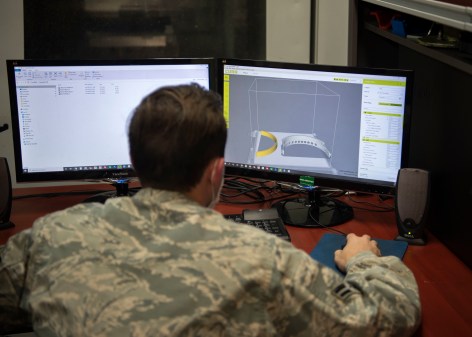The Army’s goal of achieving its first successful financial audit in its 239-year history may be at risk because financial managers misconfigured one of the main enterprise resource planning systems used to record logistical and financial transactions.
Next month, the Army plans to assert that a large portion of its financial statements are ready to undergo an audit — a major milestone in the overall Defense Department effort to produce an audit-ready consolidated financial statement by 2017. But a report released Monday by the DOD inspector general raises concerns about the audit-readiness of the Army Working Capital Fund.
According to the report, unless the Army re-engineers the system used to record logistics and financial transactions, known as the Logistics Modernization Program, “it is unlikely they will achieve audit-ready financial statements by FY 2017.”
Although next month’s planned assertion of audit readiness for its current-year statement of budgetary resources will not guarantee a successful audit, it will mark a major milestone in a multiyear effort to modernize the service’s enterprise resource planning systems.
The Army has been forced to undertake a major modernization effort to ensure its ERP systems are capable of handling and analyzing the wide variety of data elements that go into Army decision making, for everything from force structure to logistics and acquisitions, and then ensuring the data can be turned into accurate, auditable reports.
But the IG report has found significant problems with the LMP system. “Despite spending more than $1.8 billion, Army personnel did not perform sufficient re-engineering to provide the correct system requirements for executing the budget-to-report business process,” the IG report states. As a result, the LMP system “cannot provide financial managers with reliable budgetary execution information without more than $41 billion in manual adjustments to prepare the budgetary reports.”
LMP replaced the Standard Depot System and will replace the Commodity Command Standard System in fiscal year 2014. The lifecycle cost estimate for LMP is $4.1 billion, according to the Army IG office.
And while the Army has already spent nearly half of the money allotted to develop and field LMP, the system did not contain the functionality to perform the necessary budget-to-report business process.
“Specifically, Army financial managers did not provide the LMP Product Management Office the correct system configuration requirements,” the IG report stated. “This occurred because Army financial managers did not assess the DOD transaction codes to determine applicability to [Army Working Capital Fund] business areas or to incorporate existing manual workarounds.”
This latest IG report is the third in a series of investigations into the LMP effort. The first report, issued in 2010, concluded the Army did not deliver a system compliant with U.S. general ledger standards.
The second report, published in 2012, detailed “material weaknesses” in the LMP system and said it did not provide accurate financial data. The report also reprimanded Army managers for not assessing internal control effectiveness, which forced the use of costly manual business processes.
In March, Kristyn Jones, deputy assistant secretary of the Army for financial information management, praised the Army’s efforts to prepare for next month’s assertion that it will be audit-ready.
“And now, we’re going to be able to assert that we’re ready to do that for our appropriated funds,” she said, speaking at a conference sponsored by the Northern Virginia chapter of the Armed Forces Communications and Electronics Association. “To me, that’s a pretty big deal.”
But Jones also acknowledged that meeting the 2017 deadline is “going to be a challenge.”





